#seminole indians
Text
The Battle of ‘Negro Fort’ – Inside America's Forgotten Slave Rebellion - MilitaryHistoryNow.com

A year after the Battle of New Orleans, runaway slaves armed by the British occupied a stockade in Spanish Florida. The so called “Negro Fort” became a mecca for other fugitives from Southern plantations. In 1816, the U.S. Army arrived to crush the settlement. (Image source: WikiCommons)
“The Battle of the ‘Negro Fort,’ marks a critical moment when the federal government took a decisive stance in support of slavery and its expansion.”
By Matt Clavin
THE TIDAL MARSHES of Florida’s Apalachicola River were still under the authority of the Spanish crown in 1816, yet the events that took place there would go on to become a forgotten yet tragic chapter in the long and bloody history of American slavery.
It was during that year that an army of fugitive slaves, armed with foreign weaponry and united by dreams of freedom, would fight and die against a legion of American troops and allied Creek Indians dispatched by a future U.S. president bent on their destruction.
The Battle of the ‘Negro Fort’ marks a critical moment when the federal government took a decisive stance in support of slavery and its expansion.
What would become known as Negro Fort actually sprung from the War of 1812, one of the United States’ most misunderstood conflicts. During the contest’s third and final summer, Britain landed hundreds of troops on Florida’s Gulf Coast in preparation of an invasion of the southern United States.

Still Spanish territories at the time, East Florida and West Florida were neutral in the second war between the American Republic and the United Kingdom. Yet, the uncontested arrival of British troops there suggested the local authorities had ostensibly sided with the redcoats.
Americans’ fears of a Spanish-British alliances only increased when a detachment of Royal Marines erected a sizeable fort on the eastern shore of the Apalachicola River in the Florida Panhandle. Commanders of the new outpost then called upon Native Americans and fugitive African American slaves from across the region to join the British at the fort and together take up arms against the United States. Eventually, more than a thousand Creek, Choctaw, and Seminole Indians, along with several hundred runaways from southern plantations, accepted the invitation.

Following the final ratification of the Treaty of Ghent in the spring of 1815, the British withdrew their forces from Florida. With their powerful allies suddenly gone, most of the Indians gathered at the Apalachicola fort returned to their homes. But the hundreds of fugitive slaves inside the stockade had no place to go and so remained at the abandoned British post. And with the fort’s massive earthworks, wooden palisades and stone buildings at their disposal, along with an arsenal of hundreds of muskets, swords, bayonets and dozens of cannon, the runaways chose to remain there come what may.

Under an informal system of government that can best be described as martial law, this militant black community organized daily for its defence. At the same time, it established important relationships with the neighbouring Choctaws, Creeks, and Seminoles, who provided food and other sustenance in return for weapons and ammunition.
Negro fort was, in a word, formidable.
One British officer who, following the Treaty of Ghent, set out to assist some of the fugitive’s former owners regain their valuable property offered a curt assessment of fort’s inhabitants.
“The blacks are very violent & say they will die to a man rather than return.”
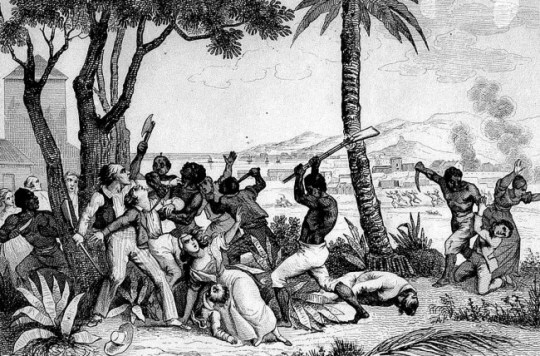
In the coming weeks and months, Hawkins and a number of prominent frontier citizens and officials flooded Washington with reports of rebellious slaves and their savage Indian allies running wild across the southern frontier. The accounts were almost entirely exaggerated.
Although clashes between Indians and settlers on disputed lands throughout the American south were commonplace in the early 19th Century, aside from inspiring an exodus of fugitive slaves from the southern states into Florida, the Negro Fort posed no threat to the United States.
None of this stopped the commander of the United States’ southern army, General Jackson, from taking bold and aggressive action against the settlement.
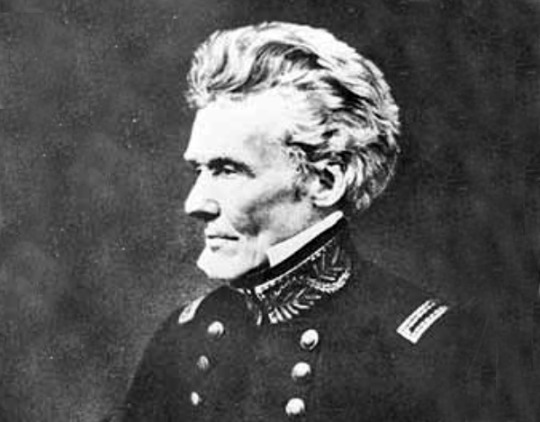
Through a careful and calculating correspondence, Jackson ordered General Edmund Gaines, a hero of the War of 1812, invade Florida with 100 regulars, destroy the fort and return all of its black inhabitants to their American and Spanish owners. To ensure an American victory with as few friendly casualties as possible, Jackson secured the assistance of hundreds of Creek warriors by promising them a cash reward of as much as $50 dollars a head for every black slave returned to captivity.

Over the course of the next two weeks, hundreds of pro-American Creek warriors clashed with black rebels in the dense woods surrounding the fort, which at times descended into bloody hand-to-hand combat.
With American troops watching from a safe distance, the number of casualties went unrecorded—though it must have been considerable.
When a failed sortie by the fort’s defenders was repulsed, an American eyewitness suspected it was only a ruse.
“Many circumstances convinced us,” army doctor Marcus Buck wrote to his father, “that most of them determined never to be taken alive.”
With a pause in the ground fighting, American army and navy vessels on the river exchanged cannonfire with the fort’s defenders for several days.
The bombardment continued to the morning of July 27, when a heated cannonball, or “hotshot,” fired from U.S. Gunboat 154 flew over walls of Negro Fort’s massive inner citadel, landing directly on a gunpowder magazine.

The response of American officials to the destruction of Negro Fort was muted, largely because the entire campaign was illegal. After all, with neither congressional nor executive authority, the United States armed forces had invaded a foreign territory.
By contrast, southern slave owners hailed the battle’s outcome as the dawning of a new day. A Georgia writer expressed this view when reporting “the capture of the Negro and Indian Fort, on Apalachicola.” He explained that because of the efforts of his “brave countrymen,” the southern and western frontiers were now free of the “predatory incursions” posed by black and Indian bandits “whose numbers were daily augmenting; and whose strength and resources presented a fearful aspect to our peaceful borders.”

Within two years of the Battle of Negro Fort, Jackson and the American army again invaded Florida. The resulting First Seminole War would be the first of three wars between the United States and Florida’s black and Indian population who simply refused to submit to their northern American neighbours.
Though Negro Fort survived for only a year, its memory endured in the hearts and minds of hundreds of its inhabitants who had abandoned the outpost prior to its destruction. By fleeing to the Florida peninsula and aligning with the Seminole Indians, most of these former slaves carved out difficult but free lives on the outer edges of the American republic.
As many as one hundred of them were even more fortunate, finding not only freedom but peace and tranquility in the West Indies. By boarding trading vessels and escaping to the Bahama Islands several years after the Battle of Negro Fort, they completed the improbable journey from American slaves to British subjects.
#The Battle of ‘Negro Fort’ – Inside America's Forgotten Slave Rebellion#florida#negro fort#negro abraham#Freedmen#seminole indians#florida enslaved#history of slave settlements in florida
10 notes
·
View notes
Text

A group of Seminole Indians from the Florida Everglades pitched their camp at the World's Fair, where they became one of the attractions of the amusement zone, April 25, 1939. This is a family scene in one of the native huts.
Correction: this must have been 1940, as the fair didn’t open till April 30, 1939. Unless they settled in before it opened.
Photo: Associated Press via Orlova Center
#vintage New York#1930s#Seminoles#25 April#American Indians#Native Americans#NY World's Fair#1939-40 World's Fair#April 25
36 notes
·
View notes
Text
youtube
When the Seminole Indians Aligned With Escaped Slaves
The Black Seminoles were a group of people that history, for the most part, forgot about. Their alliance with the native Seminole tribes resulted in a unique relationship that had never been seen before, and that changed the course of history for both the Seminoles and the State of Florida as a whole.
The Black Seminoles, sometimes called Maroons, were a group of freed men and runaway slaves living in Florida during the mid-16th century. They settled the first free Black town in American history, attained their freedom by joining the Spanish and converting to Catholicism, and formed a tight cultural bond with the Seminole tribes.
#When the Seminole Indians Aligned With Escaped Slaves#Freedmen#florida#Seminoles#Black Indians#Black History Matters#Black History of Florida#Black History Month 2024#bhm24#2024#Youtube
6 notes
·
View notes
Text
Indian Removal Act Forces Indigenous Peoples to Migrate West
youtube
On May 28, 1830, President Andrew Jackson signed the Indian Removal Act, which authorized the president to grant land west of the Mississippi River in exchange for the lands of the American Indian tribes living primarily in the southeastern U.S. President Jackson’s message to Congress stated a double goal of the Indian Removal Act: freeing more land in southern states like Alabama and Mississippi, while also separating Native American people from “immediate contact with settlements of whites” in the hopes that they will one day “cast off their savage habits and become an interesting, civilized, and Christian community.”
Although the act referred specifically to those “tribes and nations of Indians as may choose to exchange the lands where they now reside” and President Jackson described the removal as a “happy consummation” of the government’s “benevolent policy” toward Indigenous people, the legislation led to the brutal forced migration of thousands of Muscogee (Creek), Choctaw, Chickasaw, Seminole, and Cherokee people to present-day Oklahoma. The journey came to be known as the “Trail of Tears.”
Numerous reports described epidemic illness, devastating exposure to the elements, and high rates of death along the migration paths. One eyewitness account published in the Arkansas Gazette stated, “No portion of American history can furnish a parallel of the misery and suffering at present endured by the emigrating Creeks.”
#Andrew Jackson#history#white history#us history#Indian Removal Act#Mississippi River#Alabama#Mississippi#indigenous#Muscogee#Creek#Choctaw#Chickasaw#Seminole#Cherokee#genocide#us genocide#christian#white supremacy#Youtube
0 notes
Text
0 notes
Text
"Growing up, Mackenzee Thompson always wanted a deeper connection with her tribe and culture.
The 26-year-old member of the Choctaw Nation said she grew up outside of her tribe’s reservation and wasn’t sure what her place within the Indigenous community would be.
Through a first-of-its-kind program, Thompson said she’s now figured out how she can best serve her people — as a doctor.
Thompson is graduating as part of the inaugural class from Oklahoma State University’s College of Osteopathic Medicine at the Cherokee Nation. It’s the first physician training program on a Native American reservation and in affiliation with a tribal government, according to school and tribal officials.
“I couldn’t even have dreamed this up,” she said. “To be able to serve my people and learn more about my culture is so exciting. I have learned so much already.”
Thompson is one of nine Native graduates, who make up more than 20 percent of the class of 46 students, said Dr. Natasha Bray, the school’s dean. There are an additional 15 Native students graduating from the school’s Tulsa campus.
The OSU-COM graduates include students from 14 different tribes, including Cherokee, Choctaw, Muscogee, Seminole, Chickasaw, Alaska Native, Caddo, and Osage.
Bray said OSU partnered with the Cherokee Nation to open the school in 2020 to help erase the shortage of Indigenous doctors nationwide. There are about 841,000 active physicians practicing in the United States. Of those, nearly 2,500 — or 0.3 percent — are Native American, according to the Association of American Medical Colleges.
When American Indian and Alaska Native people visit Indian Health Service clinics, there aren’t enough doctors or nurses to provide “quality and timely health care,” according to a 2018 report from the Government Accountability Office. On average, a quarter of IHS provider positions — from physicians to nurses and other care positions –are vacant.
“These students here are going to make a generational impact,” Cherokee Nation Principal Chief Chuck Hoskin Jr. told the students days before graduation. “There is such a need in this state and in this region for physicians and this school was created out of a concern about the pipeline of doctors into our health system.”
The Cherokee Nation spent $40 million to build the college in its capital of Tahlequah. The walls of the campus feature artifacts of Cherokee culture as well as paintings to remember important figures from Cherokee history. An oath of commitment on the wall is written in both English and Cherokee.
The physician training program was launched in the first year of the pandemic.
Bray said OSU and Cherokee leadership felt it was important to have the school in the heart of the Cherokee Nation, home to more than 141,000 people, because students would be able to get experience treating Indigenous patients. In Tahlequah, students live and study in a small town about an hour east of Tulsa with a population of less than 24,000 people.
“While many students learn about the problems facing these rural communities,” Bray said. “Our students are getting to see them firsthand and learn from those experiences.”
While students from the college are free to choose where to complete their residency after graduation, an emphasis is placed on serving rural and Indigenous areas of the country.
There’s also a severe lack of physicians in rural America, a shortage that existed before the COVID-19 pandemic. The Association of American Medical Colleges has projected that rural counties could see a shortage between 37,800 and 124,000 physicians by 2034. An additional 180,000 doctors would be needed in rural counties and other underserved populations to make up the difference.
Bray said OSU saw an opportunity to not only help correct the underrepresentation of Native physicians but also fill a workforce need to help serve and improve health care outcomes in rural populations.
“We knew we’d need to identify students who had a desire to serve these communities and also stay in these communities,” she said.
Osteopathic doctors, or DOs, have the same qualifications and training as allopathic doctors, or MDs, but the two types of doctors attend different schools. While MDs learn from traditional programs, DOs take on additional training at osteopathic schools that focus on holistic medicine, like how to reduce patient discomfort by physically manipulating muscles and bones. DOs are more likely to work in primary care and rural areas to help combat the health care shortages in those areas.
As part of the curriculum, the school invited Native elders and healers to help teach students about Indigenous science and practices...
Thompson said she was able to bring those experiences into her appointments. Instead of asking only standard doctor questions, she’s been getting curious and asking about her patient’s diets, and if they are taking any natural remedies.
“It’s our mission to be as culturally competent as we can,” she said. “Learning this is making me not only a better doctor but helping patients trust me more.”
-via PBS NewsHour, May 23, 2024
#indigenous#native american#cherokee#choctaw#cherokee nation#medical school#united states#doctors#medical news#medical student#cultural competence#cultural heritage#public health#health care#medicine#good news#hope#oklahoma
979 notes
·
View notes
Photo

TAMBORES LEJANOS es una película de RAOUL WALSH, del año 1951, protagonizada por un INMENSO GARY COOPER. Es otro WESTERN atípico que nos sumerge en los EVERGLADES de la península de FLORIDA, donde un grupo de valerosos soldados comandados por el capitán QUINCY WYATT (GARY COOPER) deberá hacer frente a PELIGROSOS CAIMANES, una SELVA que devora vidas y el ASEDIO CONSTANTE de los INDIOS SEMINOLAS para cortar a estos últimos el suministro de armas proporcionado por despiadados CONTRABANDISTAS. Una película de aventuras como las de antes en la que la ACCION apenas da un respiro, y en la que también se dan cita el ROMANCE y la sensación de asistir a un espectáculo natural asombroso. ^^^ Link en la bío ^^^ #warnerbros #garycooper #tamboreslejanos #everglades #florida #seminoles #adventure #dangerous #aventura #western #raoulwalsh #indian #snakes #wilhelm #drums #farwest #marialdon #richardwebb #quincywyatt #miami #puma #blackbear #nature #war #seminola #mestizo #halfblood #crocodiledundee #cuartomilenio https://www.instagram.com/p/Ck1XW7vMbg_/?igshid=NGJjMDIxMWI=
#warnerbros#garycooper#tamboreslejanos#everglades#florida#seminoles#adventure#dangerous#aventura#western#raoulwalsh#indian#snakes#wilhelm#drums#farwest#marialdon#richardwebb#quincywyatt#miami#puma#blackbear#nature#war#seminola#mestizo#halfblood#crocodiledundee#cuartomilenio
0 notes
Text

Exploring Native life of the late 1800’s and reading about the traditions, culture, & way of life.
0 notes
Text
Fort Christmas
A recent visit to Fort Christmas in Christmas Florida.

View On WordPress
0 notes
Text
If the Black Seminoles were Indians, why did they speak African Creole & had African names?


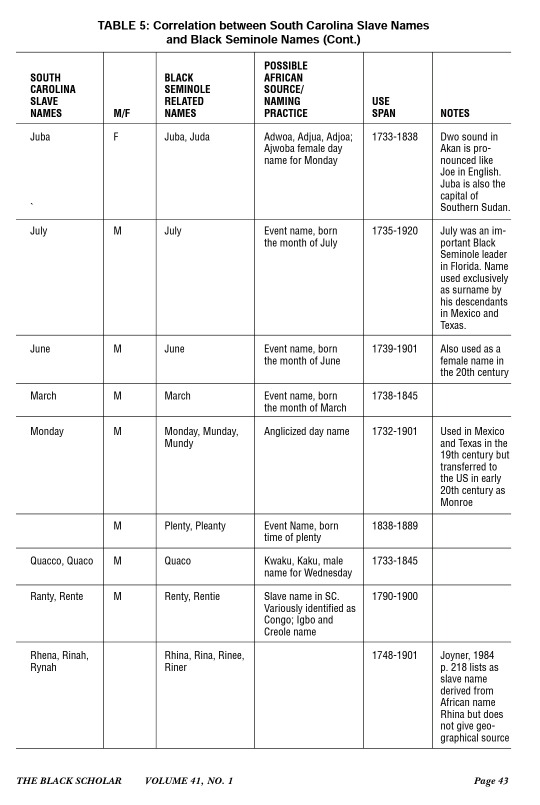
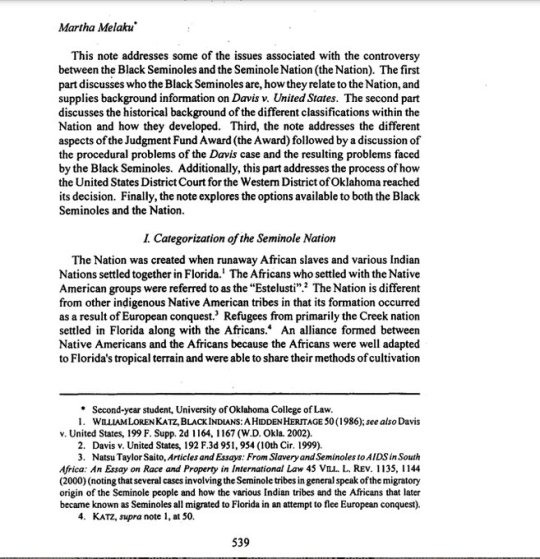
youtube
#If the Black Seminoles were Indians#why did they speak African Creole & had African names?#Africans#Freedmen#Indians#cherokees#Black Seminoles#Youtube
15 notes
·
View notes
Photo


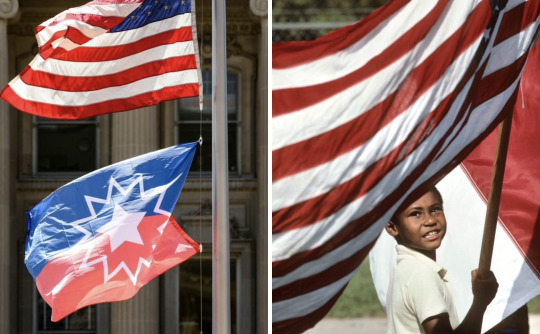


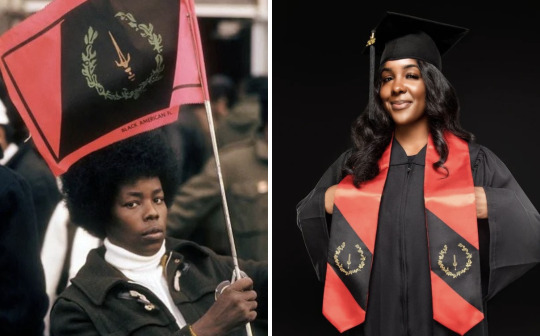
Juneteenth is a Black American holiday.
We call Juneteenth many things: Black Independence Day, Freedom Day, Emancipation Day, Jubilee Day. We celebrate and honor our ancestors.
December 31 is recognized as Watch Night or Freedom’s Eve in Black American churches because it marks the day our enslaved ancestors were awaiting news of their freedom going into 1863. On January 1, 1863, President Lincoln issued the Emancipation Proclamation. But all of the ancestors wouldn’t be freed until June 19, 1865 for those in Galveston, Texas and even January 23, 1866 for those in New Jersey (the last slave state). (It’s also worth noting that our people under the Choctaw and Chickasaw Nations wouldn’t be freed until April 28, 1866 and June 14, 1866 for those under the Cherokee Nation by way of the Treaties.)
Since 1866, Black Americans in Texas have been commemorating the emancipation of our people by way of reading the Emancipation Proclamation and coming together to have parades, free festivities, and later on pageants. Thereafter, it spread to select states as an annual day of commemoration of our people in our homeland.
Here’s a short silent video filmed during the 1925 Juneteenth celebration in Beaumont, Texas:
youtube
(It’s also worth noting that the Mascogos tribe in Coahuila, Mexico celebrate Juneteenth over there as well. Quick history lesson: A total of 305,326 Africans were shipped to the US to be enslaved alongside of American Indians who were already or would become enslaved as prisoners of war, as well as those who stayed behind refusing to leave and walk the Trail of Tears to Oklahoma. In the United States, you were either enslaved under the English territories, the Dutch, the French, the Spanish, or under the Nations of what would called the Five “Civilized” Native American Tribes: Cherokee, Creek (Muscogee), Chickasaw, Choctaw, and Seminoles. Mascogos descend from the Seminoles who escaped slavery during the Seminole Wars, or the Gullah Wars that lasted for more than 100 years if you will, and then settled at El Nacimiento in 1852.)
We largely wave our red, white and blue flags on Juneteenth. These are the only colors that represent Juneteenth. But sometimes you may see others wave our Black American Heritage flag (red, black, and gold).
Juneteenth is a day of respect. It has nothing to do with Africa, diversity, inclusion, immigration, your Pan-African flag, your cashapps, nor your commerce businesses. It is not a day of “what about” isms. It is not a day to tap into your inner colonizer and attempt to wipe out our existence. That is ethnocide and anti-Black American. If you can’t attend a Black American (centered) event that’s filled with education on the day, our music, our food and other centered activities because it’s not centered around yours…that is a you problem. Respect our day for what and whom it stands for in our homeland.
Juneteenth flag creator: “Boston Ben” Haith
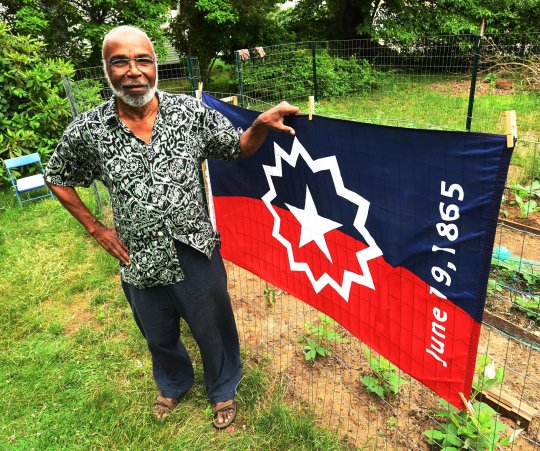
It was created in 1997. The red, white and blue colors represent the American flag. The five-point star represents the Lone State (Texas). The white burst around the star represents a nova, the beginning of a new star. The new beginning for Black Americans.
Black American Heritage Flag creators: Melvin Charles & Gleason T. Jackson

It was created in 1967, our Civil Rights era. The color black represents the ethnic pride for who we are. Red represents the blood shed for freedom, equality, justice and human dignity. Gold fig wreath represents intellect, prosperity, and peace. The sword represents the strength and authority exhibited by a Black culture that made many contributions to the world in mathematics, art, medicine, and physical science, heralding the contributions that Black Americans would make in these and other fields.

SN: While we’re talking about flags, I should note that Grace Wisher, a 13-year-old free Black girl from Baltimore helped stitched the Star Spangled flag, which would inspire the national anthem during her six years of service to Mary Pickersgill. I ain’t even gon hold you. I never looked too far into it, but she prob sewed that whole American flag her damn self. They love lying about history here until you start unearthing them old documents.
In conclusion, Juneteenth is a Black American holiday. Respect us and our ancestors.
#juneteenth#juneteenth flag#black american history#black american culture#ben haith#black american heritage flag#melvin charles#gleason t jackson#grace wisher#american flag#mascogos#juneteenth 2023
1K notes
·
View notes
Note
Hello! What are some of your favorite Pro-Palestine, Anti Zionist fc's you'd like to see used more? I want to make an OC and have zero ideas but I want to try to only use FC's that, like, aren't heartless pieces of shit, ya know?
Cherien Dabis (1976) Palestinian / Jordanian.
Michael Malarkey (1983) Palestinian, Italian-Maltese / Irish, German.
May Calamawy (1986) Jordanian, Palestinian / Egyptian.
Dina Shihabi (1989) Palestinian, Saudi Arabian / Norwegian, German and Haitian.
Nemahsis / Nemah Hasan (1994) Palestinian.
Angel Guardian (1998) Palestinian and Filipino.
Noor Taher (1999) Palestinian and Lebanese.
Saint Levant (2000) Palestinian, Serbian / Algerian, French.
Josie Totah (2001) Palestinian / Lebanese, Italian, Irish, German - is a trans woman.
+ an entire masterlist of Palestinian fcs!
Also, since lots of people are asking here's a masterlist but PLEASE NOTE THAT THIS IS NOT COMPREHENSIVE LIST OF PEOPLE WHO HAVE POSTED AND/OR SPOKEN ABOUT PALESTINE!
Why I'm not adding people who have only asked for a ceasefire.
HERE is @leepacey's list.
I also have a private list you're welcome to DM me for, both also have people who support Isr*el for people to avoid.
Vanessa Redgrave (1937)
Miriam Margolyes (1941) Jewish.
Charles Dance (1946)
Patti Smith (1946)
Duke Erikson / Garbage (1951)
Annie Lennox (1954)
Butch Vig / Garbage (1955)
Juliet Stevenson (1956)
Peter Capaldi (1958) - donated an auction to Cinema4Gaza.
Steve Marker / Garbage (1959)
Hugo Weaving (1960)
Michael Stipe (1960)
Liam Cunningham (1961)
Sabrina Ferilli (1964)
Paco Tous (1964)
Robert Del Naja / Massive Attack (1965)
Björk (1965)
John Cusack (1966)
Shirley Manson / Garbage (1966)
Aasif Mandvi (1966) Indian.
Serj Tankian (1967) Armenian.
Tricky / Massive Attack (1968) Afro Jamaican / Anglo-Guyanese.
Kathleen Hanna (1968)
Benedict Wong (1971) Hongkonger.
Boots Riley (1971) African-American, one quarter Ashkenazi Jewish (maternal grandmother), small amounts of German, English, Scots-Irish/Northern Irish, Scottish, Wampanoag.
Ava DuVernay (1972) Louisiana Creole.
Gabrielle Union (1972) African-American.
Poorna Jagannathan (1972) Indian.
Haifa Wehbe (1972) Egyptian / Lebanese.
Kimya Dawson (1972) African-American.
Ava DuVernay (1972) African-American.
Cat Power (1972)
Sarah Sophie Flicker (1973) Jewish.
Omar Metwally (1974) Egyptian / Dutch.
Maxine Peake (1974)
Itziar Ituño (1974)
Nelly Karim (1974) Egyptian / Russian.
Mahershala Ali (1974) African-American.
Sara Ramírez (1975) Mexican and some Irish - non-binary, queer and bisexual (they/them).
Carice van Houten (1976)
Karen Olivo (1976) Puerto Rican [Spanish, Indigenous, possibly other] / Dominican Republic, Chinese - is non-binary (they/them).
Haaz Sleiman (1976) Lebanese - is gay.
Antonio De Matteo (1978)
Joelle Mardinian (1977) Lebanese.
Alberto Ammann (1978) Argentinan.
Daniel Brühl (1978)
Max Collins / Eve 6 (1978)
Kayvan Novak (1978) Iranian.
Residente / René Pérez Joglar (1978) Puerto Rican.
Immortal Technique (1978) Amerindian, Spanish, French and African.
Hend Sabry (1979) Egyptian.
Luis Bordonada (1979) Mexican.
Kate Box (1979) - is gay.
Ser Anzoategui (1979) Argentinian and Paraguayan - is non-binary (they/them).
Dorra Zarrouk (1980) Tunisian.
Amerie (1980) African-American / Korean.
Angelica Ross (1980) African-American - is trans.
Dargen D'Amico (1980)
Gustaf Skarsgård (1980)
Madeleine Sami (1980) Fijian-Indian / White - is a lesbian.
Khalid Abdalla (1980) Egyptian.
Arian Moayed (1980) Iranian.
Massari (1980) Lebanese.
Tahar Rahim (1981) Algerian.
Kaan Urgancıoğlu (1981) Turkish.
Shawna Farmer / chubbycartwheels (1981)
Beth Ditto (1981) - is queer.
Morgan Spector (1981) Ashkenazi Jewish / Irish, German, some Scottish and English.
Jesse Williams (1981) African-American, Seminole / Swedish.
Amanda Seales (1981) African-American / Grenadian [African, at least one quarter European].
Riz Ahmed (1982) Pakistani.
Arthur Darvill (1982) - donated an auction to Cinema4Gaza.
Emel Mathlouthi (1982) Tunisian.
Rajshri Deshpande (1982) Indian.
Niamh McGrady (1982)
Yolanda Bonnell (1982) Ojibwe, White / Indian - is two-spirit and queer (she/they) - is open about having OCD and ADHD!
Macklemore (1983)
Luna Maya (1983) Indonesian.
Amir Eid (1983) Egyptian.
Aisling Bea (1984)
Mohamed Emam (1984) Egyptian.
Mahira Khan (1984) Pakistani.
Alex Meraz (1984) Mexican [Purepecha].
Sami Zayn (1984) Syrian.
Jena Malone (1984)
Zawe Ashton (1984) Ugandan / White - donated an auction to Cinema4Gaza.
Siobhan Thompson (1984)
Ravyn Ariah Wngz (1984) Mohawk, Tanzanian, Afro-Bermudian - is a Two-Spirit trans woman (she/her).
Kristin Chirico (1984) - is questioning their gender, “encompassing a lot of things” but is not yet sure if she’s nonbinary or a gender non-confirming woman and uses they/her - openly bisexual and demisexual and have Obsessive Compulsive Disorder, ADHD, dyslexia, and asthma.
Tamanna Roashan (1984) Indian / Afghani.
Asia Kate Dillon (1984) Ashkenazi Jewish / Unspecified - non-binary and pansexual (they/them).
Burak Özçivit (1984) Turkish.
Enjy Kiwan (1984) Egyptian.
Kid Cudi (1984) African-American.
Sepideh Moafi (1985) Iranian.
Lilan Bowden (1985) Taiwanese / English, Welsh.
Alex Meraz (1985) Mexican [Purépecha].
Aabria Iyengar (1985) African-American.
Rahul Kohli (1985) Punjabi Indian.
Marina Diamandis (1985)
Troian Bellisario (1985) American, Louisiana Creole [African, French, English] / White.
Sonam Kapoor (1985) Indian.
Carmen V. Ortega Baljian (1985)
Carsie Blanton (1985) Jewish.
Haley Webb (1985)
Yani Gellman (1985) Ashkenazi Jewish, possibly other.
Giulia Michelini (1985)
Lewis Hamilton (1985) Afro Grenadian / White.
Eréndira Ibarra (1985) Mexican - is bisexual.
Karim Kassem (1986) Egyptian / Egyptian Jewish.
Mihaela Drăgan (1986) Romani - is queer.
Asim Chaudhry (1986) Pakistani.
Jenna Coleman (1986) - donated an auction to Cinema4Gaza.
Diane Guerrero (1986) Colombian.
Whitney Greyton (1986) Black South African / Namibian - is queer (she/they).
Fahriye Evcen (1986) Turkish.
Amber Riley (1986) African-American.
Ericka Hart (1986) African-American - is non-binary femme, queer, and polyamorous (she/they).
Lido Pimienta (1986) Colombian [Wayuu, Afro-Colombian] - is queer.
Mihaela Dragan (1986) Romani.
DJ Snake (1986) Algerian / French.
Alba Flores (1986) Romani, Spanish [including Andalusian] - is a lesbian.
Saagar Shaikh (1986) Pakistani.
Mustafa Ali (1986) Pakistani.
Lily Gladstone (1986) Kainai Blackfoot, Amskapi Pikuni Blackfoot, Nez Perce, Dutch, Cajun - she/they.
Pidgeon Pagonis (1986) Mexican and Greek - is intersex and non-binary (they/them).
Guz Khan (1986) Pakistani.
Eugene Lee Yang (1986) Korean - is gay.
Bob the Drag Queen (1986) African-American - is polyamorous, pansexual and non-binary (he/her).
Asim Chaudhry (1986/87) Pakistani.
Marwa Agrebi (1987) Tunisian.
Mercury Stardust (1987) - is non-binary trans femme (she/they).
Sasha Velour (1987) Russian Jewish / Ukrainian, other - is genderfluid (she/they when not in drag, she while in drag).
Susan Wokoma (1987) Nigerian.
Munroe Bergdorf (1987) Afro Jamaican / English - is trans.
Michael B. Jordan (1987) African-American.
Juliana Huxtable (1987) African-American - is trans.
Nicola Coughlan (1987)
Anjana Vasan (1987) Tamil Indian.
Pearl Mackie (1987) West Indian / English - is bisexual.
Erika Ishii (1987) Japanese - is genderfluid (she/they/any) - also posted on Brennan’s post: “Thank you for always being thoughtful with your advocacy and direct in your action. From the river to the sea.”
Michaela Coel (1987) Ghanaian - is aromantic, boycotted the Sydney Festival 2022 for Palestine.
Carina Shero (1988)
Joe Cole (1988)
Elsa Hosk (1988)
Kendrick Sampson (1988) African-American / English, Scottish, German, Cajun/French, Danish, Norwegian.
Kelly Piquet (1988) Brazilian.
Navild Acosta (1988) African-American - is non-binary queer (he/him).
Brennan Lee Mulligan (1988)
Swara Bhasker (1988) Indian.
Aiysha Hart (1988) Saudi Arabian and English.
John Early (1988) - is gay.
Sabrina Dhowre Elba (1988) Somali.
Joel Kim Booster (1988) Korean - is gay and has bipolar disorder.
Gratiela Brancusi (1989) Romani and Greek Romanian.
Frank Waln (1989) Sicangu Oyate Lakota Sioux.
Rakeen Saad (1989) Jordadian.
Morfydd Clark (1989)
Mary Lambert (1989) - is a lesbian.
Meyne Wyatt (1989) Wongutha and Yamatji.
Dina Torkia (1989) Egyptian / English.
Kiell Smith-Bynoe (1989) Afro Barbadian and Afro Jamaican - donated an auction to Cinema4Gaza.
Laith Ashley (1989) Afro Dominican - is a trans man and asexual.
Shea Couleé / Jaren Kyei Merrell (1989) African-American - non-binary (they but she/her while in drag).
Emma Watson (1990)
Mitski (1990) Japanese / White.
Arrows Fitz (1990) African-American - is non-binary (he/they/she/it).
Shirine Boutella (1990) Algerian.
Luke Baines (1990)
Julia Jacklin (1990)
Josh O’Connor (1990) - donated an auction to Cinema4Gaza.
Paapa Essiedu (1990) Ghanaian - and donated an auction to Cinema4Gaza.
Lolly Adefope (1990) Yoruba Nigerian.
Tabria Majors (1990) African-American.
Rosaline Elbay (1990) Egyptian.
Katie Findlay (1990) English, Hongkonger, Portuguese-Macanese, Scottish - is queer (they/them).
Poppy Liu (1990) Chinese - is non-binary (she/they).
Shareena Clanton (1990) Blackfoot, Cherokee, African-American, Wangkatha, Yamatji, Noongar, Gija.
Maren Morris (1990)
Kiowa Gordon (1990) Hualapai, White.
Leigh-Anne Pinnock (1991) Afro Barbadian and Jamaican.
Joe Alwyn (1991)
Emily Ratajkowski (1991)
Jari Jones (1991) African-American / Filipino - is trans.
Vico Ortiz (1991) Puerto Rican - non-binary (they/them).
Denée Benton (1991) African-American.
Dylan O'Brien (1991)
Bonnie Wright (1991)
Ramy Youssef (1991) Egyptian.
Sarah Kameela Impey (1991) Indo-Guyanese / British.
Ali Burak Ceylan (1991) Turkish.
Seychelle Gabriel (1991) French, Mexican / Italian, including Sicilian - also has Spoken up for Sudan.
Alexa Nikolas (1992)
Emma D’Arcy (1992) - is non-binary (they/them).
Jarvis Johnson (1992) Unspecified.
Tasha Cloud (1992) African-American - is a lesbian.
Jess Bush (1992)
Rosa Robson (1992) - donated an auction to Cinema4Gaza.
Jade Thirlwall (1992) English, three eights Arab [Egyptian, Yemeni], small amount of Scottish.
Faia Younan (1992) Syrian.
Merhan Keller (1992) Egyptian.
Julien Solomita (1992)
Pauline Chalamet (1992) Ashkenazi Jewish / English, Scottish, Irish, French.
Hari Nef (1992) Ashkenazi Jewish - is a trans woman.
Paloma Elsesser (1992) African-American / Chilean-Swiss.
Katie Gavin / MUNA (1992) - is queer.
Rupi Kaur (1992) Punjabi Indian.
Joana Ribeiro (1992)
Medalion Rahimi (1992) Iranian, Iranian Jewish - uses she/they.
Conor Mason / Nothing But Thieves (1992)
Rose Matafeo (1992) Samoan / Scottish and Croatian.
Zaqi Ismail (1992) Tanzanian.
Cailin Russo (1993)
Tara Emad (1993) Egyptian / Yugoslav Montenegrin.
Younes Bendjima (1993) Algerian.
Bobbi Salvör Menuez (1993) - is trans non-binary (they/them).
Stormzy (1993) Ghanaian.
Chance the Rapper (1993) African-American.
Raveena Aurora (1993) Punjabi Indian.
Naomi McPherson / MUNA (1993) West Indian and Irish - is queer and nonbinary (they/them).
Freddy Carter (1993)
Ghali (1993) Tunisian.
Jordan Alexander (1993) German, Irish, African-American.
Charlotte Day Wilson (1993)
Mia Khalifa (1993) Lebanese.
Maria Thattil (1993) Indian.
AJ Tracey (1994) Afro-Trinidadian / Welsh.
Ben Barlow (1994)
Asia Jackson (1994) Ibaloi Filipino and African American.
Isabella Roland (1994) Jewish.
Josette Maskin / MUNA (1994) Jewish - is queer and nonbinary (she/they).
Aimee Lou Wood (1994)
Rose Williams (1994)
Joseph Quinn (1994) - donated an auction to Cinema4Gaza.
Jasmin Savoy Brown (1994) African-American / English, German, one quarter Norwegian, some Scots-Irish/Northern Irish - is queer.
Theo Tiedemann (1994) Asian - is trans non-binary and gay (he/they).
Little Simz (1994) Yoruba Nigerian.
Huda Elmufti (1994) Egyptian.
Dylan Gelula (1994) Ashkenazi Jewish / Unspecified.
Arsema Thomas (1994) Nigerian / Ethiopian - is non-binary (she/they).
Earl Sweatshirt (1994) Black South African.
Kurtis Conner (1994)
Julien Baker (1995) - is a lesbian.
Kehlani (1995) African-American, French, Blackfoot, Cherokee, Spanish, Mexican, Filipino, Scottish, English, German, Scots-Irish/Northern Irish, Welsh, Cornish, Irish, Choctaw - non-binary womxn, lesbian and polyamorous - she/they.
Achraf Koutet (1995) Moroccan.
Lucy Dacus (1995) - is queer.
Jack Wolfe (1995) - is queer - donated an auction to Cinema4Gaza.
Daniel Caesar (1995) Afro Barbadian and Jamaican.
Archie Madekwe (1995) Igbo Nigerian (one quarter), White.
Jazzelle / Jazzeppi Zanaughtti (1995) Afircan-American.
Elvina Mohamad (1995) Malaysian.
Stanzi Potenza (1995) - is non-binary (she/they) - has epilepsy and ADHD.
Willow Pill (1995) - is trans femme, has cystinosis and is autistic.
Bree Kish (1996) ¼ Black.
Alessia Cara (1996)
CMAT / Ciara Mary-Alice Thompson (1996) - is bisexual.
Josefine Frida Pettersen (1996)
María Isabel (1996) Dominican.
Mustafa the Poet (1996) Sudanese.
Lorde (1996)
Florence Pugh (1996)
Lowkey (1986) Iraqi / English.
Denzel Curry (1995) Afro Bahamian and Unspecified Native American.
Brandon Soo Hoo (1995) Chinese.
Lily Gao (1995) Chinese.
Halema Hussain (1995) - Sylheti.
Jessie Mei Li (1995) Hongkonger / English - is a gender non-conforming woman who uses she/they.
Grace Van Dien (1996)
Diana Veras (1996) Dominican.
Abdelhamid Sabiri (1996) Moroccan.
Lauren Jauregui (1996) Cuban [Spanish, possibly other], likely some Basque - is bisexual.
Ally Beardsley (1996) - is non-binary (they/them).
Thea Sofie Loch Naess (1996)
AURORA (1996)
Leo Sheng (1996) Chinese - is a trans man.
Imaan Hammam (1996) Moroccan / Egyptian.
Tavi Gevinson (1996) Ashkenazi Jewish / Norwegian [converted to Judaism].
Quintessa Swindell (1997) African-American / White - is non-binary (they/he).
070 Shake (1997) Dominican - doesn't like to put labels on her sexuality.
Zara Larsson (1997)
Faye Webster (1997)
Alison Oliver (1997) - donated an auction to Cinema4Gaza.
Juliette Motamed (1997) Iranian.
Madeline Ford (1997)
Asa Butterfield (1997)
Scene Queen (1997)
Micheal Ward (1997) Afro Jamaican.
Xiran Jay Zhao (1997) Hui Chinese - is non-binary (they/them).
Lori Harvey (1997) African-American.
Mayan El Sayed (1997) Egyptian.
Hania Aamir (1997) Pakistani.
Sisi Stringer (1997) African Australian.
Omar Apollo (1997) Mexican - is gay.
Kaiit (1997) Papuan / Gunditjmara, Torres Strait Islander - is non-binary (she/he/they).
Piper Curda (1997) Korean / English, Scottish - is apsec.
Iman Meskini (1997) Tunisian / Norweigan - is pro Palestine!
Clara Nieblas (1997) Mexican.
Janella Salvador (1998) Bisaya Filipino.
Ethel Cain (1998) - is a trans bisexual woman.
Joanna Pincerato (1998) Mexican, Syrian. Swedish and Italian.
Joanna Arida (1998) Jordadian.
Chella Man (1998) Hongkonger and Jewish - is deaf, trans genderqueer and pansexual (he/they).
Benedetta Porcaroli (1998)
Em / Not Even Emily / Still Not Emily (1998) Taiwanese / Chinese.
Luna Carmoon (1998)
Gretta Ray (1998)
Clairo (1998) - is bisexual and has juvenile idiopathic arthritis.
SANTAN / Dave (1998) Edo Nigerian.
Salsabiela A. (1998) Unspecified.
Ariela Barer (1998) Mexican, Ashkenazi Jewish.
Celeste O'Connor (1998) Kenyan - is non-binary (they/them).
Wegz (1998) Egyptian.
Jessica Alexander (1999)
Rafaela Plastira (1999)
Minami Gessel (1999) Japanese / Ashkenazi Jewish.
Kenna Sharp (1999) - is queer.
Samara Joy (1999) African-American.
Sab Zada (1999) Chinese, Filipino, and Hispanic.
Zoe Terakes (2000) Greek Australian - trans masc non-binary guy (they/he).
Anthony Lexa (2000) - is a trans woman.
Marissa Bode (2000) African-American - is disabled.
Odessa A'zion (2000) Ashkenazi Jewish, English, some Irish, Northern Irish, Welsh, German.
Reneé Rapp (2000) - is a lesbian.
Celia Rose Gooding (2000) African-American - bisexual and gray asexual, uses she/they - also saw somewhere they don't like being called a woman.
Lucas Jade Zumann (2000) Ashkenazi Jewish / possibly German.
Cat Burns (2000) Liberian - is queer, autistic and has ADHD.
Maitreyi Ramakrishnan (2001) Tamil.
Andria Tayeh (2001) Jordanian and Lebanese.
Freya Allan (2001)
Ari Notartomaso (2001) - is non-binary (they/he).
Rachel Zegler (2001) Colombian / White.
Maria Guardiola (2001)
Hope Ikpoku Jnr (2001) Black British.
Morgan Davies (2001) - is a trans man.
Corey Maison (2001) - is a trans woman.
Ahmet Haktan Zavlak (2001) Turkish.
Kei Kurosawa (2001) Bisaya Filipino and Japanese.
Rhea Norwood (2001) - has type 1 diabetes.
Aaron Rose Philip (2001) Afro-Antiguan - is a trans woman who has cerebral palsy.
Denise Julia (2002) Filipino.
Nessa Barrett (2002) Puerto Rican.
Yara Mustafa (2002) Jordanian.
Iris Apatow / Iris Scot (2002) Ashkenazi Jewish / Irish, Scottish, Finnish, German.
Kosar Ali (2003) Somali.
Paris Paloma (?)
Madeleine Hyland (?)
Bobby Sanchez (?) Peruvian [Quechua] - is Two-Spirit and trans, uses she/her sometimes they/they).
Nick Hakim (?) Chilean / Peruvian.
Micaela López Bianchi (?) Argentinian.
Jas Lin (?) Taiwanese - is queer (they/them).
Georgia Maq (?)
Eddy Mack (?) Jordanian.
Ellie Kim / SuperKnova (?) Korean - genderfluid, transgender woman (she/her).
Alexia Roditis / Destory Boys (?) - uses they/them.
Violet Mayugba / Destory Boys (?)
Narsai Malik / Destory Boys (?)
David Orozco / Destory Boys (?)
Neil Turner / Los Campesinos! (?)
Tom Bromley / Los Campesinos! (?)
Kim Paisey / Los Campesinos! (?)
Rob Taylor / Los Campesinos! (?)
Jason Adelinia/ Los Campesinos! (?)
Matt Fidler / Los Campesinos! (?)
Raul Briones (?) Mexican.
Britton Smith (?) Black.
Farrah / farrahescapes (?) Emirati.
CJ / Cup of Jo / cupofjoemusic_ (early 20's) Pangasinense Filipino.
Gian / Cup of Jo / cupofjoemusic_ (early 20's) Pangasinense Filipino.
Rapha / Cup of Jo / cupofjoemusic_ (early 20's) Pangasinense Filipino.
Gab / Cup of Jo / cupofjoemusic_ (early 20's) Pangasinense Filipino.
Sevii / Cup of Jo / cupofjoemusic_ (early 20's) Ilocano Filipino.
Xen / Cup of Jo / cupofjoemusic_ (early 20's) Ilocano Filipino.
Grey Gritt (?) Ojibwe and Metis - is genderqueer (they/them).
Elaine Crombie (?) Pitjantjatjara, Yankunytjatjara, Warrigmay, South Sea Islander, and White.
Nori Reed (?) Korean / Unspecified - is non-binary (she/her).
Shahd Khidir (?) Sudanese.
Arewà Basit (?) Black - uses she/they.
Majid Al Maskati / Majid Jordan (?) Bahraii.
Jordan Ullman / Majid Jordan (?)
+ please let me know if you want more!
113 notes
·
View notes
Text
Ever After High: Character Ethnicity Headcanons
Apple White: German 🇩🇪
Raven Queen: German-Korean 🇩🇪🇰🇷
Briar Beauty: Colombian-Venezuelan 🇨🇴🇻🇪
Ashlynn Ella: French 🇫🇷
Maddie Hatter: English-Indian 🇬🇧🇮🇳
Cerise Hood: French-Seminole 🇫🇷
Ramona Badwolf: French-Seminole 🇫🇷
Cedar Wood: Italian 🇮🇹
Daring Charming: English-Dutch 🇬🇧🇳🇱
Dexter Charming: English-Dutch 🇬🇧🇳🇱
Darling Charming: English-Dutch 🇬🇧🇳🇱
C.A. Cupid: Greek 🇬🇷
Blondie Lockes: Swedish 🇸🇪
Holly O’Hair: French-German 🇫🇷🇩🇪
Poppy O’Hair: French-German 🇫🇷🇩🇪
Duchess Swan: Japanese 🇯🇵
Sparrow Hood: Scottish-French 🏴🇫🇷
Melody Piper: German-Turkish 🇩🇪🇹🇷
Ginger Breadhouse: Filipino 🇵🇭
Rosabella Beauty: French-Venezuelan 🇫🇷🇻🇪
Hunter Huntsman: Thai 🇹🇭
Hopper Croakington II: German-Austrian 🇩🇪🇦🇹
Lizzie Hearts: English 🇬🇧
Kitty Cheshire: English-Chinese 🇬🇧🇨🇳
Alistair Wonderland: English 🇬🇧
Bunny Blanc: English-French 🇬🇧🇫🇷
Jillian Beanstalk: Irish-Cherokee 🇮🇪 (really wish the Cherokee Nation flag had an emoji)
Justine Dancer: French-Nigerian 🇫🇷🇳🇬
Meeshell Mermaid: Vietnamese 🇻🇳
#eah#ever after high#ever after high headcanons#apple white#raven queen#cerise hood#come on apple#make Native American flag emojis
112 notes
·
View notes
Text
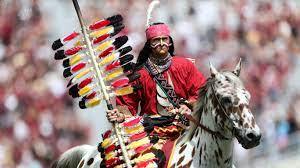

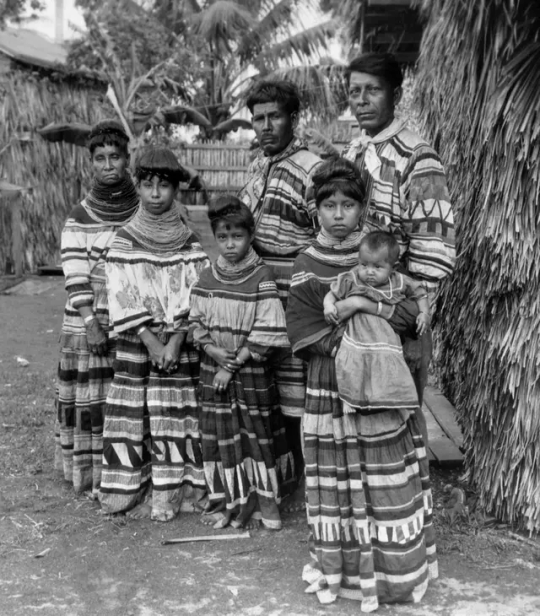
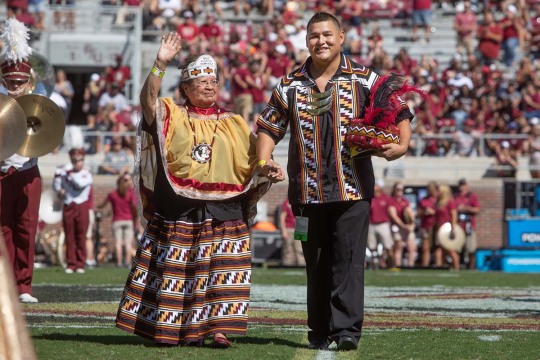
The Seminole are a Native American people who developed in Florida in the 18th century. Today, they live in Oklahoma and Florida, and comprise three federally recognized tribes: the Seminole Nation of Oklahoma, the Seminole Tribe of Florida, and the Miccosukee Tribe of Indians of Florida, as well as independent groups.
The word "Seminole" is almost certainly derived from the Creek word simanó-li. This has been variously translated as "frontiersman", "outcast", "runaway", "separatist", and similar words. The Creek word may be derived from the Spanish word cimarrón, meaning "runaway" or "wild one", historically used for certain Native American groups in Florida.

Native American refugees from northern wars, such as the Yuchi and Yamasee after the Yamasee War in South Carolina, migrated into Spanish Florida in the early 18th century. More arrived in the second half of the 18th century, as the Lower Creeks, part of the Muscogee people, began to migrate from several of their towns into Florida to evade the dominance of the Upper Creeks and pressure from encroaching colonists from the Province of Carolina. They spoke primarily Hitchiti, of which Mikasuki is a dialect. This is the primary traditional language spoken today by the Miccosukee in Florida. Joining them were several bands of Choctaw, many of whom were native to western Florida. Some Chickasaw had also left Georgia due to conflicts with colonists and their Native American allies. Also fleeing to Florida were African Americans who had escaped from slavery in the Southern Colonies
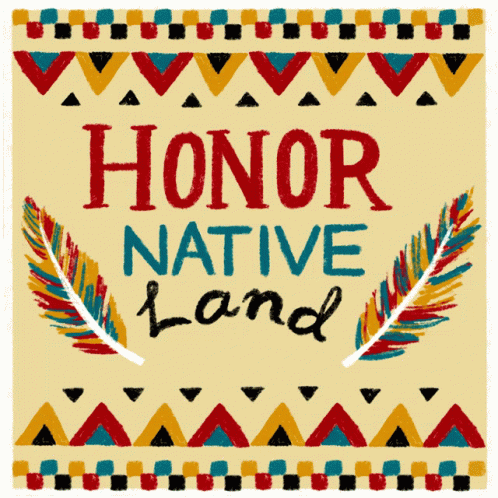
As they established themselves in northern and peninsular Florida throughout the 1700s, the various new arrivals intermingled with each other and with the few remaining indigenous people. In a process of ethnogenesis, they constructed a new culture which they called "Seminole", a derivative of the Mvskoke' (a Creek language) word simano-li, an adaptation of the Spanish cimarrón which means "wild" (in their case, "wild men"), or "runaway" [men].[ The Seminole were a heterogeneous tribe made up of mostly Lower Creeks from Georgia, who by the time of the Creek War (1813–1814) numbered about 4,000 in Florida. At that time, numerous refugees of the Red Sticks migrated south, adding about 2,000 people to the population. They were Creek-speaking Muscogee, and were the ancestors of most of the later Creek-speaking Seminole. In addition, a few hundred escaped African-American slaves (known as the Black Seminoles) had settled near the Seminole towns and, to a lesser extent, Native Americans from other tribes, and some white Americans. The unified Seminole spoke two languages: Creek and Mikasuki (mutually intelligible with its dialect Hitchiti), two among the Muskogean languages family. Creek became the dominant language for political and social discourse, so Mikasuki speakers learned it if participating in high-level negotiations. The Muskogean language group includes Choctaw and Chickasaw, associated with two other major Southeastern tribes.
In part due to the arrival of Native Americans from other cultures, the Seminole became increasingly independent of other Creek groups and established their own identity through ethnogenesis. They developed a thriving trade network by the time of the British and second Spanish periods (roughly 1767–1821). The tribe expanded considerably during this time, and was further supplemented from the late 18th century by escaped slaves from Southern plantations who settled near and paid tribute to Seminole towns. The latter became known as Black Seminoles, although they kept many facets of their own Gullah culture.
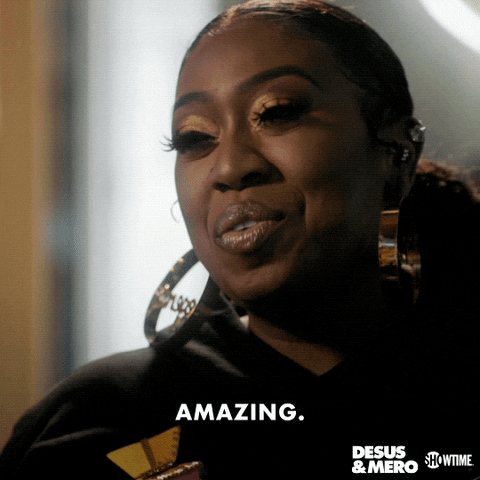
During the colonial years, the Seminole were on relatively good terms with both the Spanish and the British. In 1784, after the American Revolutionary War, Britain came to a settlement with Spain and transferred East and West Florida to it.
The Spanish Empire's decline enabled the Seminole to settle more deeply into Florida. They were led by a dynasty of chiefs of the Alachua chiefdom, founded in eastern Florida in the 18th century by Cowkeeper. Beginning in 1825, Micanopy was the principal chief of the unified Seminole, until his death in 1849, after removal to Indian Territory. This chiefly dynasty lasted past Removal, when the US forced the majority of Seminole to move from Florida to the Indian Territory (modern Oklahoma) after the Second Seminole War. Micanopy's sister's son, John Jumper, succeeded him in 1849 and, after his death in 1853, his brother Jim Jumper became principal chief. He was in power through the American Civil War, after which the U.S. government began to interfere with tribal government, supporting its own candidate for chief.
After raids by Anglo-American colonists on Seminole settlements in the mid-18th century, the Seminole retaliated by raiding the Southern Colonies (primarily Georgia), purportedly at the behest of the Spanish. The Seminoles also maintained a tradition of accepting escaped slaves from Southern plantations, infuriating planters in the American South by providing a route for their slaves to escape bondage.
After the United States achieved independence, the U.S. Army and local militia groups made increasingly frequent incursions into Spanish Florida to recapture escaped slaves living among the Seminole. American general Andrew Jackson's 1817–1818 campaign against the Seminoles became known as the First Seminole War. Though Spain decried the incursions into its territory, the United States effectively controlled the Florida panhandle after the war.
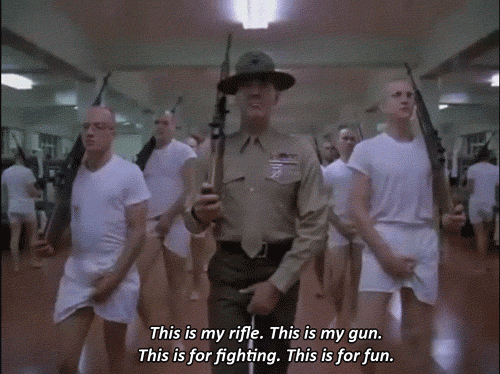

#african#afrakan#kemetic dreams#africans#brownskin#brown skin#afrakans#asians#asian#asian chick#asian babe#asian butt cheeks#asian beauty#asian cutie#asian babes#asian girl#asian girls#asian fashion#asian goddess#asian perfection#asian model#asian tattoos#asianbeauty#asian women#asianfemale#asiangirl#asianpeople#asiansexy#asianwomen#beautiful asian women
14 notes
·
View notes

